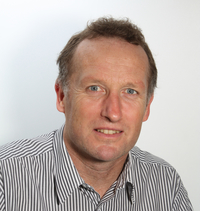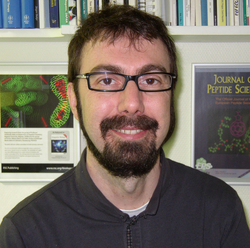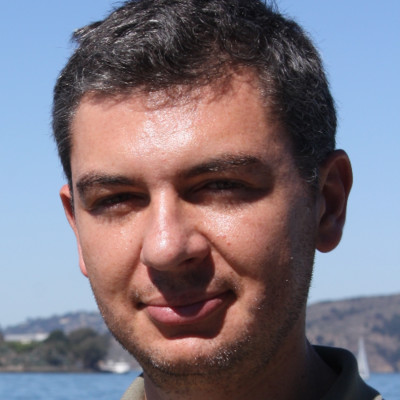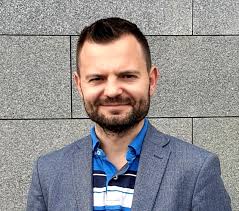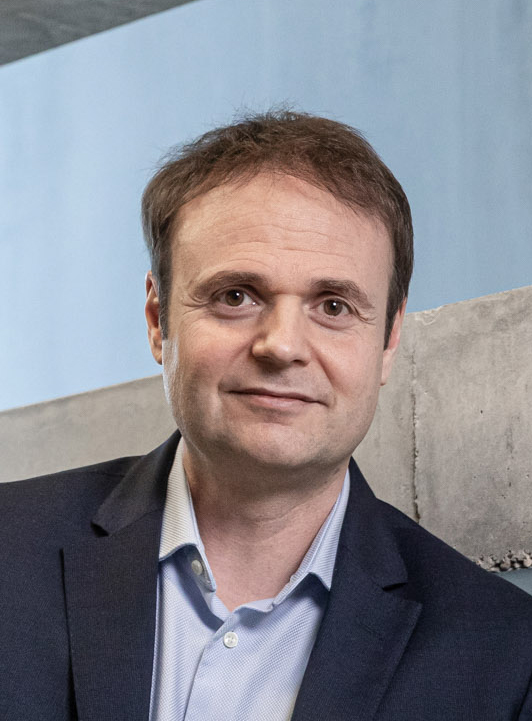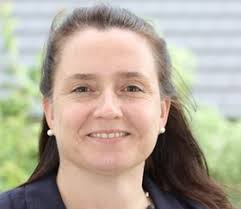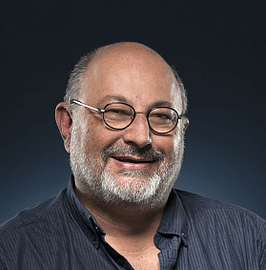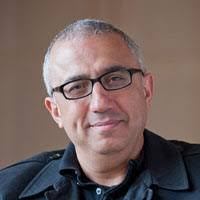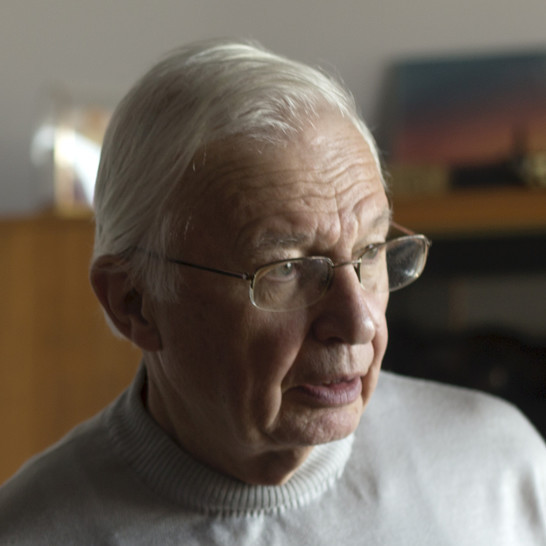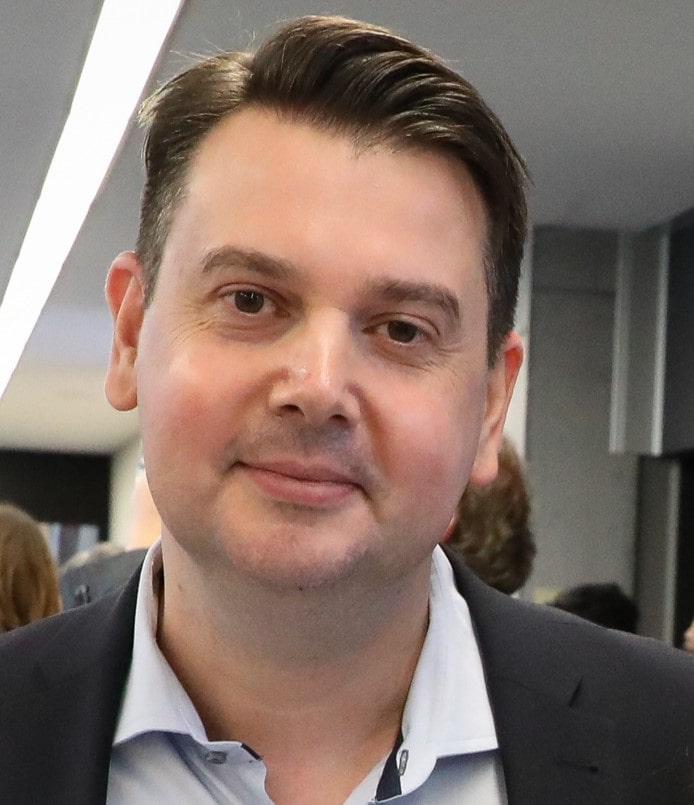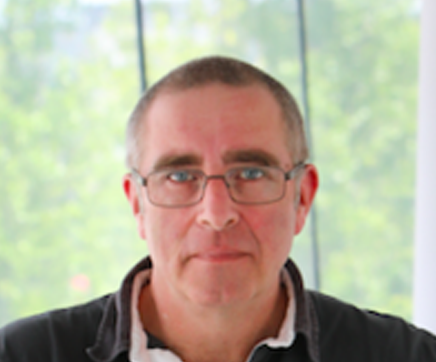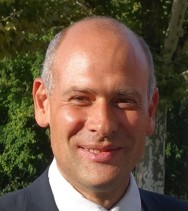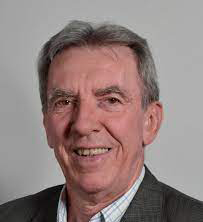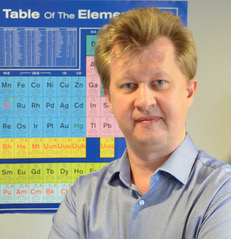The research teams
Cutting-edge laboratories within SysChem with a regular track record of recognition
(parmi les financements européens les plus prestigieux)
From the Nobel Prize winners to the new generation of researchers
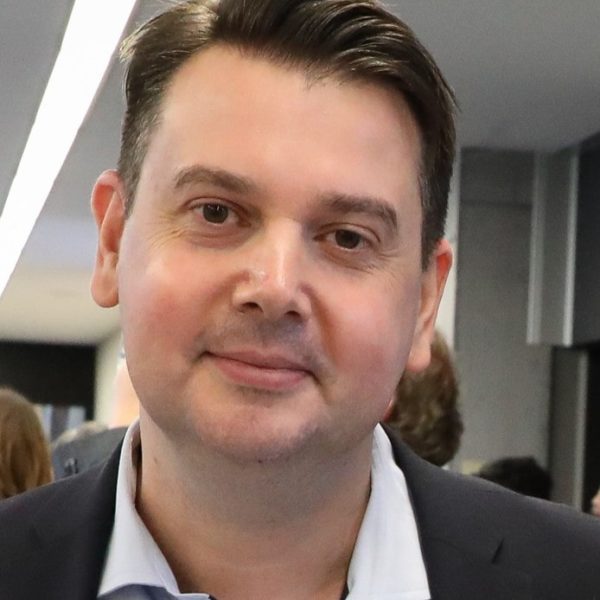
Dr Jean-François Lutz
2 ERC
CNRS silver medal (2018)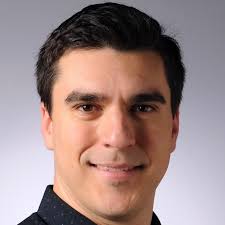
Prof Joseph Moran
2 ERC
Named one of the world’s 12 best young chemists in 2018 by the magazine Chemical Chemical & Engineering News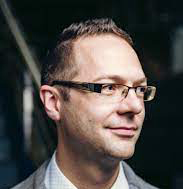
Prof Thomas Hermans
1 ERC
Named one of the world’s 21 best scientists under 40 by the World Economic Forum (2019)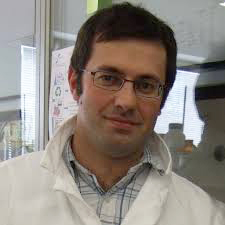
Dr Andrey Klymchenko
2 ERC
CNRS Bronze Medal (2010)Discover the list of laboratories by research topic
Paolo Samori – Nanochemistry
Alberto Bianco – Therapeutic Multifunctional Carbon and 2D Nanomaterials
Amir Hoveyda – Catalytic Chemical Synthesis
Joseph Moran – Chemical catalysis
Pawel Dydio – Complex Systems in Synthesis and Catalysis
Marco Cecchini – Molecular Function and Design
Vincent Robert – Quantum Chemistry
Burkhard Bechinger – Membrane Biophysics
and NMR
Petra Hellwig – Bioelectrochemistry
and Spectroscopy
Alexandre Klymchenko – Nanochemistry and Bioimaging
Vladimir Torbeev – BioSystems Chemistry
Alberto Bianco – Therapeutic Multifunctional Carbon and 2D Nanomaterials
Thomas Hermans – Bioelectrochemistry and Spectroscopy
Mir Wais Hosseini – Molecular Tectonics
Nicolas Giuseppone – Self-Assembled Molecular Systems
Jean-Marie Lehn – Supramolecular Chemistry
Jean-Pierre Sauvage – Organo-Mineral Chemistry
Jean-François Lutz – Precision Macromolecular Chemistry
Jean-François Nierengarten – Chemistry of Molecular Materials
Membrane Biophysics and NMR
Therapeutic Multifunctional Carbon and 2D Nanomaterials.
Molecular Function and Design
Complex Systems in Synthesis and Catalysis
The team’s ambition is to conduct cutting-edge research to respond to the challenges of sustainable development, in particular the responsible use of resources and energy and the development of clean technologies in the chemicals industry. Although chemists have achieved huge progress in the development of selective reactions with numerous selective catalysts, according to the current dogma regarding organic synthesis, each reaction should be carried out consecutively, which involves the isolation and purification of each intermediate. Although this approach is generally effective, it is not efficient from an economic or environmental viewpoint. The achievement of complete sequences of organic reactions in a single reactor has become a real challenge, particularly for the design of multicatalyst systems.
The laboratory focuses both on the improvement of our fundamental understanding of complex systems chemistry for organic synthesis and on the development of powerful new tools based on the construction of complex networks of organic reactions that take place within self-regulated multicatalytic systems inspired by nature, in particular by the metabolic networks of enzyme reactions.
Self-Assembled Molecular Systems
The development of stimulable, adaptive and multi-task chemical systems constitutes a major objective to unlock the new generation of so-called “smart” functional materials.
The team is interested in the understanding and control of the processes of self-assembly and self-organisation programmed on the molecular level, and in their dynamics and cooperative effects up to macroscopic scales. This expertise enables them to generate complex systems capable of interacting with their environment and adapting to it through emergence processes. In terms of applications, such properties will be necessary in order to realise this next generation of so-called “smart” materials.
Thanks to their unique combination of expertise ranging from the synthesis of complex molecules to the understanding of the dynamics of self-assembly and the physicochemistry and physics of polymers, the team’s achievements have included the development of self-healable and recyclable materials based on double-dynamic elastomers, with airtightness properties that are being tested on an industrial scale for construction.
Bioelectrochemistry and Spectroscopy
The laboratory specialises in the study of enzymes: the extremely effective catalysts present in nature that perform the chemical reactions necessary for cellular life. The catalytic power of enzymes is responsible for the production of substances and energy, which are indispensable for the proper functioning of living organisms.
More specifically, the team uses Raman and infrared (IR) difference spectroscopy, associated with electrochemistry, to study the catalytic function of proteins and to elucidate their mechanisms.
The team’s scientific expertise is based on the use of nanomaterials to engineer direct electrochemical manipulation of membrane proteins. It also develops approaches relating to the thermostability of proteins and the identification of spectroscopic markers of conditions such as Alzheimer’s disease in biological tissues.
Non equilibrium Complex Systems
The laboratory works on nonequilibrium systems in the broad sense: from living artificial materials in supramolecular chemistry to the new phenomena of fluid dynamics in high-shear or magnetic-levitation flow tubes. The team is highly interdisciplinary, with research conducted in the fields of chemistry, chemical engineering, physics, electrical engineering and biomedical engineering.
The improvement of energy yield is one of the key steps that will make it possible to reduce greenhouse gasses by two thirds between now and 2030 (International Energy Agency, 2006). This is all the more relevant to the chemicals industry, when you realise that it accounts for 25% of total industrial energy consumption. To achieve this, it is crucially important to optimise pre-existing processes, but also and above all to develop new technologies that will be able to make a real difference.
In this context, the team is interested in chiral separation, a particularly important process in the pharmaceutical industry, in particular with the use of a very specific type of fluid flow, Taylor-Couette flow, which would make it possible to separate enantiomers without even having to use the stationary phase (the most expensive component of the separation process) contained in the most modern columns. The team is developing new patented methods of chiral separation that could render current processes obsolete and significantly reduce the cost of what remains a necessary separation operation.
Molecular Tectonics
Mir Wais Hosseini is the expert in molecular tectonics, a new branch of supramolecular chemistry of which he was one of the founders. The laboratory is interested in the construction of large molecular architectures from components (tectons) that are assembled by non-covalent interactions.
The advantage of this approach lies in the fact that the production of large molecular constructions (on a millimetric scale) with structures that can be predicted and programmed in one, two or even three dimensions, is difficult to envisage using a classic synthetic means based on the step-by-step formation of covalent bonds. For around fifteen years, the team has been studying molecular assemblages drawing upon three types of interaction (ranked in decreasing energy order): coordination bonds, combinations of directional hydrogen bonds and electrostatic interactions, and finally, van der Waals interactions. Over the past four years, the team has focused above all on the continued development of molecular networks based on H bonds and coordination bonds.
Catalytic Chemical Synthesis
Amir Hoveyda was one of the 12 researchers selected in the third-wave call for proposals for the “Make our planet great again” (MOPGA) initiative launched by French President Emmanuel Macron. The research undertaken within the group focuses on stereochemically defined organic molecules, either small molecules or macromolecules, that play or could play a crucial role in drug development and progress in human medicine. In particular, the laboratory works on new methods of catalysis, devoted to the production of high-added-value organic molecules for medicine, such as compounds active against cancers, tumours or hepatitis C.
The objective is to introduce catalytic methods to generate these molecules that are effective, selective, widely applicable and practical (scalable), as well as being sustainable and profitable (for example, no precious metals). The team’s main objective is to develop catalysers, strategies and methods that respond practically and realistically to our major environmental challenges.
Based on the same principles, Amir Hoveyda co-founded XiMo, a European company, alongside Richard Schrock, winner of the Nobel Prize for Chemistry in 2005.
Nanochemistry and Bioimaging
The laboratory’s research revolves around the development of new functional molecules and nanoparticles, known as fluorescent probes, for biological and biomedical applications. Thanks to these fluorescent molecular probes, it is possible to achieve imaging of the structure and function of living cells on a molecular level, thanks to new concepts based on different photochemical phenomena. The goal is to exploit these concepts for biodetection and bioimaging, in particular through probes for biomembranes, intracellular organelles, membrane proteins and nucleic acids. Six membrane probes have already been brought to market (by ThermoFisher Scientific and Cytoskeloton).
The team also develops ultrabright self-assembled fluorescent organic nanoparticles, based on polymers or lipids loaded with fluorescent dyes, for biodetection and bioimaging. In particular, based on an innovative design of polymers and ionic dyes with bulky counterions, the laboratory develops nanoparticles of small, controlled size, offering bright fluorescence and efficient energy transfer. These nanoparticles are used as scaffolds for the synthesis of ultrabright nanoprobes for the detection of nucleic acids and proteins in cells and biological liquids. These nanoprobes are relevant both to fundamental research on bioimaging of rare targets and for the ultrasensitive detection of bimolecular markers in diagnostics.
Recently, the team developed new fluorescent materials functioning in the visible and near-infrared regions, which have found applications in image-guided surgery in collaboration with surgeons from the IRCAD research institute.
Supramolecular Chemistry
The winner of the Nobel Prize for Chemistry in 1987, Jean-Marie Lehn is the founder of supramolecular chemistry. He began his career initially focussing on molecular recognition, and in particular its major role in biological processes. From there, his research broadened out to incorporate catalysis and supramolecular transport processes. It also extended to the design of molecular components as the bases for molecular electronics and photonics.
Another area of development relates to the design of “programmed” systems capable of self-organisation through the spontaneous assemblage of appropriate components into well-defined supramolecular architectures.
The author of over 1,000 publications, he belongs to multiple academies and institutions as well as the boards of private companies.
Precision Macromolecular Chemistry
The team studies the synthesis of so-called “precision” non-natural polymers: very high added value materials with complex arrangements of monomers in their chains. The team focuses on new approaches that must be simple, low-cost and easy to implement.
The team was the first in the world to synthesise “coded” polymers with perfectly controlled sequences of monomers. Like natural macromolecules (proteins, DNA), the laboratory can prepare structures that are perfectly defined at the molecular level. These new materials unlock new applications for polymer materials, for example in anti-counterfeiting.
In addition, with their perfectly controlled structures, these new-generation materials also open the door to polymer data storage. The researchers have been able to write binary code identical to the code used in computing language into polymers: a chemical alternative for information storage in materials that are becoming ever more compact and durable.
Other applications are studied in the laboratory, such as drug delivery via bio-hybrid structures combining synthetic segments with natural macromolecules (DNA aptamers), or the recycling of plastic materials.
Chemical Catalysis
The laboratory is interested in applying concepts from the field of complex systems to synthesis, catalysis and prebiotic chemistry. The laboratory is known for its work on the prebiotic origins of biological metabolism under metal catalysis. The lab is also interested in the application of solvents capable of strongly donating hydrogen bonds in chemical synthesis. Together with the team of Prof. Thomas Ebbesen, the lab has pioneered the application of vibrational strong coupling to change the rates and selectivities of organic reactions.
Chemistry of Molecular Materials
The team is recognised for its contributions in the field of fullerene chemistry, transition metals chemistry and supramolecular chemistry. The research is strongly focused on synthesis and relates to a wide variety of research subjects ranging from the development of molecular materials and bioactive compounds to the construction of supramolecular assemblages with novel electronic properties.
More recently, the team launched a new research program relating to the chemistry of pillar[5]arenes, unique macrocyclic compounds with therapeutic applications that have yet to be explored.
Quantum Chemistry
Nanochemistry
The laboratory’s research activity revolves around the relationship between architecture and function in organic or graphene-derived multifunctional nano-structured materials. This research work is based on a combination of approaches involving supramolecular chemistry, hierarchical self-assembly, the nanochemistry/nanophysics of surfaces and interfaces, the development of functional materials and the study of their fundamental physicochemical properties, as well as the production of optoelectronic (nano)devices based on hybrid supramolecular architectures.
The team is interested in the chemistry of bidimensional (2D) materials, smart supramolecular systems and high-performance multifunctional materials and (nano)devices in order to develop an “internet of functions” for energy, detection and optoelectronic applications. This includes: Engineering of 2D materials (graphene and other layered compounds): production, regulation of their properties, production of devices for optoelectronics and detection;
Multi-scale adaptation of smart supramolecular systems: development of multi-reactive hybrid materials; High-performance multifunctional materials and (nano)devices for optoelectronics, detection, data storage, energy storage, etc.
Organo-Mineral Chemistry
Jean-Pierre Sauvage was awarded the Nobel Prize for Chemistry in 2016. This distinction rewarded his pioneering work on the design and synthesis of molecular machines. These nanometric-scale assemblages are capable of controlled motion in response to various signals, such as UV light, for example.
Nature abounds with complex protein machines that chemists are trying to decipher. Like a muscle that contracts, they play a part in numerous biological processes. Inspired by these processes, Jean-Pierre Sauvage devoted his career to synthesising molecules that behave like machines. The challenge lies in being able to trigger and control their movement using signals (physical, chemical, electrical, etc.) that alter the balance of forces between their atoms. Oscillating rotary systems, molecular “shuttles” and artificial muscles on a nanometric scale are some of the synthetic dynamic systems he has developed.
These nanomachines are destined for a bright future. Numerous applications are currently being studied: targeted transport of pharmaceuticals, design of deformable materials, information storage in “molecular” computers, light-controlled molecular switches…
BioSystems Chemistry
This research group specialises in the chemistry, biology and characterisation of proteins using biophysical tools, in order to study biological problems, particularly relating to neurodegenerative diseases. Research topics include the molecular foundations of protein misfolding, methodologies for high-throughput combinational protein synthesis, new chemistry-based approaches to study and target intrinsically disordered proteins and protein design. The team is developing new tools that will enable the robust chemical synthesis of protein libraries comprising 100-10,000 compounds.
